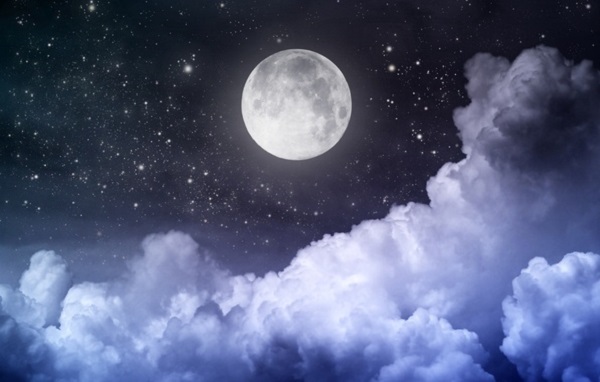
What is Kojagiri Purnima?
Kojagiri Purnima also known as Sharad Purnima is dedicate to the Moon and also to Goddess Laxmi worship. The moon appears with its 16 kalas on Kojagiri Purnima that include thought, beauty, health, wish fulfillment, knowledge, inner glow, peace, glory, light, wealth, love, stability, capability and happiness, etc. A person following the Kojagiri rituals receives the blessings of the Moon God and the food kept under moonlight is enrich with nutrients. It is helpful for healing and has great spiritual significance. The energy levels on Earth are high on Full Moon day which is to be utilize in a good manner.
Fasting and worshipping channelize these energies that benefit the worshipper. Kojagiri Purnima is celebrated on the Full Moon day of Ashwin month which falls in October. It also marks the commencement of the harvesting season and that is another reason why Goddess Laxmi is worship. She bestows the blessings of success, income flow and abundant growth.
Importance of Kojagiri Purnima
Kojagiri Purnima is majorly famous in Maharashtra and considered a favorable time to worship Goddess Laxmi. It is believe that Lord Krishna dance along with His Gopis on the night of it under the light of moon. In the Brij area of Northern India, this divine dance of love is known as Raas Purnima. On this day, the moon is closest to the Earth and appears with 16 kalas. It radiates highly elevated energies that are good for spiritual, mental and physical healing. Drinking milk under the moonlight is an auspicious ritual to imbibe the benefits of moon’s energies.
Kojagiri means “the one who is awake”. As Goddess Laxmi visits every house, she blesses the one who is awake. The ritual of staying awake and drinking milk or eating Kheer kept under the moon is observe. According to ancient beliefs, it is said the moon drips elixir on Kojagiri Purnima and special nutrients are absorb by the food place beneath the light. In some parts of India, unmarried girls observe a fast on Kojagiri Purnima to find a suitable partner for marriage.
Kojagiri Purnima Story
The story begins with a generous King who assured the artisans in his kingdom that he would buy their unsold creative items. One fine day he came across a sculpture of Goddess Alakshmi which was unsold. As promised, he bought the idol and brought in his castle. He placed the Alakshmi idol in his temple alongside Goddess Laxmi idol. Since these two were opposite forces as they couldn’t sustain altogether. Consequently, the King started to experience shortage of wealth and poverty fled in. This led the King to seek help from the Gods who suggested his wife to observe a Vrat for Maa Laxmi on it. She kept a fast for the entire day and completed the rituals. This impressed Goddess Laxmi and removed the influence of Alakshmi, the negative manifestation of Goddess Laxmi. The King was blesses with riches and regained his wealth.
Kojagiri Purnima Rituals
- Masala Dudh (Spiced Milk) is prepare on Kojagiri Purnima which is apparently a special attraction of the day.
- Rice Kheer, an Indian sweet dish made of rice grains, dry fruits and milk is offer as Bhog to Maa Laxmi.
- Those who observe a fast on Kojagiri Purnima break their fast with the Rice Kheer.
- The fast can be either conduct by just consuming liquids like water, milk, fresh fruit and juices or without water (Nirjala fast).
- Goddess Laxmi and Lord Indra set on Airavat elephant is to be worship on Kojagiri Purnima.
- In the evening, 108 oil lamps are lit to worship Maa Laxmi and Incense, fresh flowers, Bhog of Kheer are offer.
- Selflessly donating food and clothes to poor people is also beneficial.
- Installing a Shree Yantra in your dwelling on Kojagiri Purnima is auspicious.
- Many people are also observe a night vigil to absorb the healing energies of the Moon.
- Devotees from the Gujarati community celebrate this day by performing the Garba dance.
- Kojagiri Purnima is observe as Kumar Purnima in Orissa. Unmarried girls keep a fast and worship Lord Kartikeya for getting the right life partner. The fast is broke at night after worshipping the Moon.